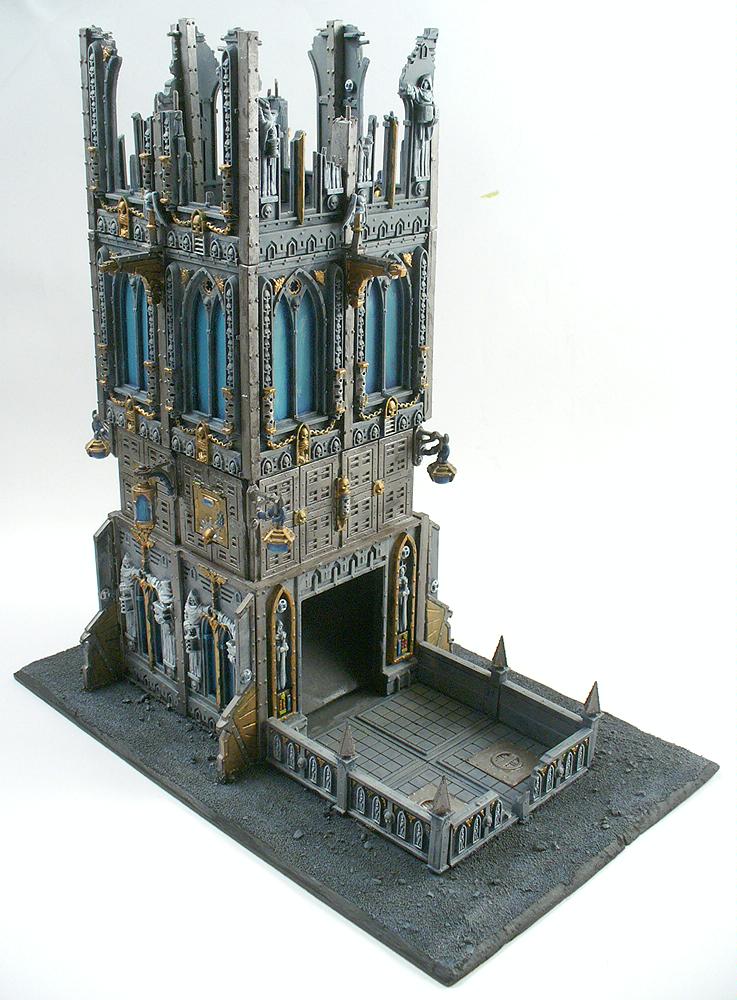Wednesday I posted a link to Fantasy Flight’s announcement of some new Star Wars games. It started me thinking about the personalities of the different game publishers, and what it means for the family and casual gamer. While it’s not a sure fire way to tell whether or not the game will suit your tastes, it might help. I thought I might dedicate a few posts to looking some of the game publishers and the common characteristics of their games.
The mere mention of Fantasy Flight Games (FFG) immediately brings one thing to my mind: Awesomeness Factor. FFG spends a lot of effort on the artwork and production of their games, which is particularly important because FFG publishes a lot of heavily thematic games: games that tell a story as they play out. A look at the top 100 (out of 53,000) games on BoardGameGeek will show fifteen are FFG titles. Only Rio Grande Games has more. Of those fifteen, eleven are fantasy themed and three are science fiction themed. Many times these games have specific tie-ins (Lord of the Rings, Battlestar Galactica) or are set in a common fictional universe such as Terrinoth, a world that sets the backdrop for the games Runebound, Runewars, Decent and others.
This attention to production plays out in several different ways. First of all, the artwork is top notch. Secondly, all of the game components are well made. Cards, typically a good indicator of the production quality, are always of the highest quality. Many FFG titles come with miniatures, and though they are a monochrome plastic, many people take the time to paint their minis in keeping with the other artwork. (I haven’t done this – yet! I have bought some paints and brushes though.) The attention to detail and thematic art helps the players feel as though they are in the story. If that’s an important part of your fun, this company is hard to beat.
 |
| Painted Fury of Dracula minis by Kevin Duffy |
The downside to FFG titles is that they are often complicated. The simple reason for this is that stories are complicated. If you are trying to create a game that feels like you are in the middle of the fight against Sauron, it’s not going to be simple. After all, Tolkien told the story of the Lord of the Rings in three volumes. This certainly isn’t true of every single game, but the more thematic (and in FFG’s case, the more popular) games are all pretty involved. FFG takes a lot of flak about their rule books, and the fact that they aren’t particularly well written. Personally, I think the level of clarity isn’t as good as some other companies' games, but I do think they are in line given the level of game complexity. Fortunately, FFG is very good about publishing FAQs and other clarifying material on their website.
 |
| Excellent artwork and card construction are an FFG hallmark (Photo by Matti Luostarinen) |
A couple of months ago, I would have said the second thing to come to mind about FFG was customer service, which was so far above “top notch” that it redefined the term. However, their customer service department, which consisted of one person, recently resigned to pursue other opportunities in life. (Thaad, you will be missed.) We will see how well they do with her gone.
For the family or casual gamer, I am sorry to say that FFG productions are probably not what you are looking for in gaming. They do publish games that are more casual, but generally the level of complexity might well be higher than is fun. The rules take some getting used to. We recently purchased Lord of the Rings: The Card Game, and I read the rules three times before I started to understand what was going on. Even then, I went to BoardGameGeek and looked at the FAQ's to finish my education. It’s a game designed to include solitaire play, so Saturday morning I hope to actually play the game. I am sure I will end up reading the rules again afterwards, and seeing all of the things I did wrong.
The practical upshot for the family or casual gamer is this: make sure you do your homework before buying a Fantasy Flight game. While the kids will probably get into the story line, think twice. Read reviews, including comments made on BoardGameGeek. Feel free to drop me a line and I will answer as best I can. If you do purchase it, and it is more than you are “game” for, let me know. Who knows, maybe your close enough that I can come teach it. Or, you could send it to me to decipher…
It’s Your Move!
Related Posts:
Links:











